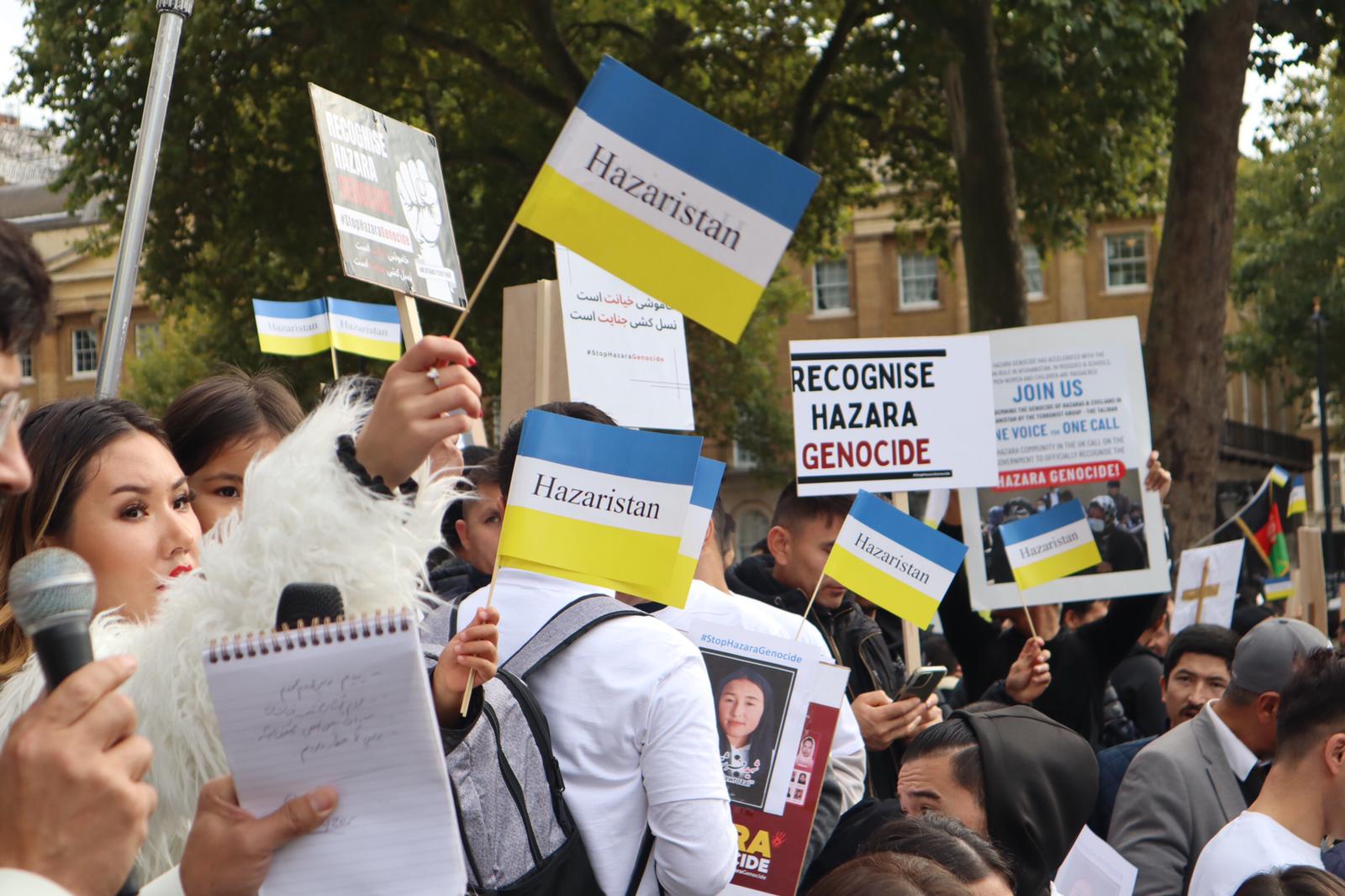
25th of September, the Hazara Genocide Memorial Day
Reading time: (Number of words: )
Brief Background
The Hazaras are a diverse ethnic group comprised of different religions, they inhabit a vast geographical land throughout Afghanistan, historically known as the autonomous region of Hazaristan. The majority of Hazaras today inhabiting in central Hazaristan, but they are today generally considered to cover different provinces such as Bamiyan, Ghur, Badghis, parts of Herat, Farah, Qandahar, Ghazni, Parwan, Baghlan, Panjsher, Samangan, Badakhshan, Sar-e-Pol, Balkh, Qonduz, Takhar, Ghazni, Kabul, Wardak, Logar, Zabul, Daikundi, Parts of Oruzgan and Helmand. [1]
The Hazaras are the native populations of Afghanistan, with a mixed composition of religions, they speak Farsi, though with their own particular ‘Hazaragi’ dialect. As there has never been an official census carried out, all ethnicities are minorities, but Hazaras form one of the three largest ethnic groups in Afghanistan. Historically the traces of Hazara’s ancestry and cultural heritage can be found throughout ancient times, in the archegonial heritage of Mundigak (harappan civilization), Amardian Civilization, ancient Dahis, Greek-Bactria Kingdom, Tokharian, Koshanian Empire, Kingdom of Bamiyan, Turk Shahi Zabulistan, Ghorian Dynasty etc.
Historically the Hazaras were located on the ancient Silk Road, subsisted on cattle breeding, and made their living from this ancient trading route of caravans from India into central Asia, Persia to China. The main exports on Hazaras were horses, ghee, carpets, wool, handmade woolen jackets/coats (Baraks), woolen socks, woolen gloves, woolen trousers, etc. The Hazaras were almost sufficient, and they were able to live virtually autonomously.
In the last two and half centuries, since the Afghan-Pashtun expansion from India into Khorasan and the autonomous region of Hazaristan, the Hazaras have suffered immense cruelties and endless cycle of discrimination, land usurpation, marginalization, persecutions, and genocide by the ruling Afghan-Pashtun governments. Today the Hazaras remain politically, economically, and socially the most deprived and underdeveloped group throughout the country.
The early subjugation and land usurpation of Hazaras started during the reign of Temur Shah Abdali 1846-1893. The Durrani tribes were encouraged systematic course of violence, aggression, and bloodshed against the Hazaras. This has resulted in the expulsion of native Hazaras from the vicinity of Kandahar, Helmand, and parts of Tirin, and Dehrawood in Oruzgan province. The Hazara fertile agricultural land was forcibly occupied by Norzai and Populzai tribes. [2]
Formerly the Hazaras inhabited around Ghazni and were in possession of western parts of the plain i.e. where the main road Kabul-Qandahar runs today, for instance, Qarabagh, Muqur, and Qalant itself in Zabul Province. Even in the south of Qalat Kareez (water irrigation canals), they were found to have been constructed by the Hazaras. Dahla is one of the original tribes of Dai Khitai Hazaras, they were inhabiting the vicinity of Qandahar where the Dahla hydraulic water dam was built by the United States in 1952. Deh Hazara (Hazara forts) is located where the new Qandahar city is built. Deh Lahor Khan (Lahor Khan forts) is the progenitor of Jaghori Hazaras and is located within Qandahar City. Kareez Mirhazar (Mirhazar water irrigation canal) a Hazara tribe, is located within the suburbs of Qandahar. Arghandab river basin was inhabited by Hazaras. [3] [4] [5] [6] [7]
The Hazaras were driven out of their ancestral lands in Wardak, Logar, Ghazni, Jalalabad during or prior to the reign of Amir Dost Mohamad Khan 1826-1863, the grandfather of Amir Abdur Rahman Khan. The Hazaras have gradually become distinct from their ancestral motherland they have been pushed into the mountainous region, and the Afghan-Pashtun tribes become the new and illegitimate settlers. [8] [9] [10]
Historical records show that Hazaras have lived in this region for thousands of years but the current dominant ethnic groups mainly Afghan-Pashtuns) claim that the Hazaras are foreigners to the land and merely the descendants of Genghis Khan’s army in order to delegitimize the ownership of their ancestral lands and to justify their systematic violence, aggression, cruelties, and marginalization of Hazaras.
After the death of Dost Mohammad Khan in 1863, his third son, Sher Ali Khan proclaimed successor, he was unsuccessful in recapturing Kabul from his older brother, Mohammad Afzal. Abdur Rahman Khan was forced into exile in Russian-held Turkistan by his cousin Sher Ali Khan.
Shortly after the second Anglo-Afghan war ended, the Treaty of Gandomak was signed in 1879 between Yaqub Khan and British India. After the death of Abdur Rahman Khan’s cousin Shir Ali, he was encouraged to return to Kabul in 1880. Upon the return of Amir Abdur Rahman to Kabul, rebellions in different parts of Afghanistan rose up against him. The Hazaras in general were living peacefully. But in 1881, the new Amir started an aggressive campaign against Sheikh Ali Hazaras, who were inhabiting northeast of Kabul and were historically persecuted and were forced to pay excessive taxes and provide supplies to Afghan armies each time they were passing through their region.
These Hazaras were provoked to react and defend themselves against systematic injustice, as a consequence, on occasions they were forced to take revenge on the Afghan army caravans passing through their area. Abdur Rahman Khan took punitive action against the Sheikh Ali Hazaras, during his first campaign against them several hundred Hazaras were killed. Their properties were destroyed, and heavy punishment was imposed per household, and their leaders were taken to Kabul as hostages.
A similar aggressive campaign and excessive repression of heavy taxes were imposed against the Turkman, Parsa, and Hazaras in Ghorband Valley in 1882. They too protested and forced the Afghan officials to house arrest. Amir ordered his forces to march with heavy cavalry and cannons to onslaught the Hazaras. This resulted in a large number of Hazaras being massacred, and many Hazaras were taken as prisoners. Those who survived the onslaught were disarmed and were heavily punished financially. [11]
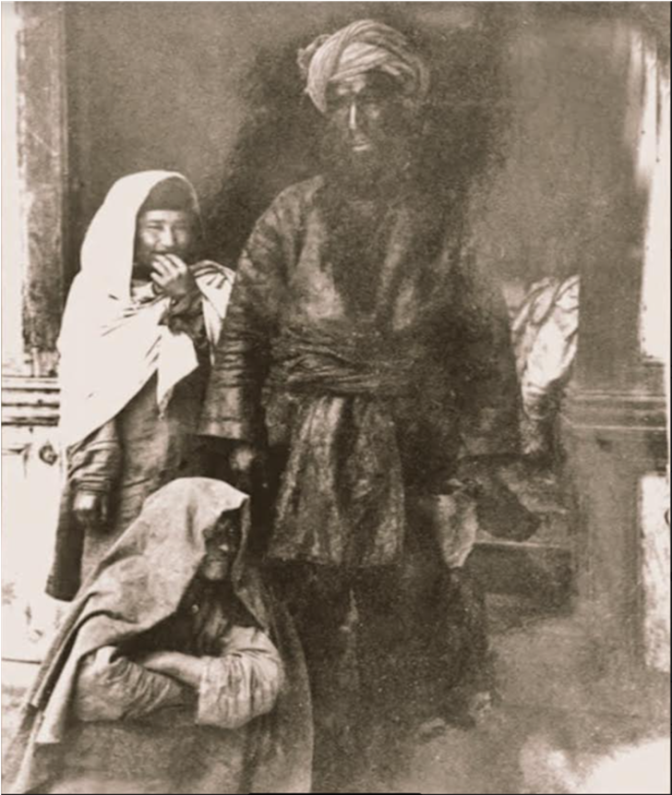
From 1882 to 1888 there were small-scale skirmishes of Amir against the Hazaras, with excessive heavy taxes imposed against them, some Hazaras have submitted to Amir’s cruelties. But Hazaras in Oruzgan were at peace. The Sheikh Ali Hazaras rebelled against the Amir in 1889, whose leaders were imprisoned by Abdur Rahman Khan since 1881. They were punished and crushed by the rebellions; large-scale populations were uprooted from their ancestral lands.
In the Year 1891, Amir Abdur Rahman Khan dispatched his forces in Oruzgan Province to collect taxes from the Hazara autonomous region, which during the history was semi-independent Hazaristan. His troops started immense cruelty, torture, rape, and destruction of agricultural farmlands. The Hazaras were provoked to react, therefore the Hazaras revolted against Amir Abdur Rahman Khan’s troops, and that revolt spread across the autonomous region of Hazaristan. [12].
Abdur Rahman Khan sent more troops to fight with the Hazaras of Oruzgan, but his troops were defeated on two occasions with heavy losses and casualties. Abdur Rahman Khan ordered Sunni Pashtun Mullahs to issue religious fatwa/decree against Hazaras, to be read in every mosque after Friday prayers, declaring Hazaras non-Mulim. Thousands of Afghan-Pashtun tribal militiamen volunteered to join Abdur Rahman Khan’s force to crash and defeat the Hazaras promising the Hazara heads would be mine and the Hazara properties and territory would be yours.
Religious leaders and Mullahs mainly Sunni Pashtuns assembled by Abdur Rahman Khan to declare jihad (religious war) to conduct a ‘’religious crusade’’ war against Hazaras. He promised Hazara lands, properties, women, and children as a reward. An enormous force was put together some 30,000-40,000 government forces, 10,000 cavalry, and some 100,000 tribal militiamen volunteered to answer his call. Some of the volunteers were Afghan-Pashtun-Nomads who had long pleaded to Amir to join the crusade war against Hazaras. [13] [14].
Amir’s religious crusade war deliberately criminalized Hazaras, declaring all holy war against the Hazaras in order to exterminate them. He declared that Hazaras are kufr (non-Muslim/nonbelievers) they should be exterminated to a point so that not a trace of them remains throughout the region of Hazaristan. The Hazara properties are to be distributed among the Afghan-Pashtun Ghilzai and Durrani tribes. Tribal forces from every part of the country joined Amir’s forces, he ordered his court to approve his order that his forces should descend upon the lands of Hazaras so that not a soul of the wicked Hazaras be safe nor escape and that the boys and girls be taken captive (and made slaves) by every member of the tribal militiamen who joined him crushing the Hazaras [15].
Amir Abdur Rahman Khan wrote to his generals not to send him Hazara heads as previously done, but instead send him their noses and ears. The
Hazara resistance in Oruzgan brutally came to an end and the Hazaras were defeated on the 25th of September 1892. Abdur Rahman Khan has annihilated, uprooted, and forcibly evicted up to 400,000 thousand Hazara families, or 65% of the entire Hazara population in different parts of Hazaristan. [16] [17].
When the Hazara prisoners were brought to Kabul, they had to face Amir’s court. According to an eyewitness, John Alfred Gray, Amir Abdur Rahman Khan’s Surgeon, he quotes: Amir was very angry, he asked me to be seated, and said send another interpreter. Tea and cigarettes were brought to the Hazaras for two hours I sat and listened to the Amir’s hoarse voice roaring out as he ordered man after man off for execution.
[18]
After brutally crushing Hazaras, they were enslaved in large numbers, throughout Afghanistan as well as India and Central Asia. Over 10,000 Hazara women and children were sold as slaves in India and in cities across Afghanistan Kandahar, Jalalabad, Ghazni, and Kabul. The Hazara women and children were sold for immoral purposes. 30 mule loads of Hazara heads from Orozgan were sent to Kabul for the Amir. Hazara prisoners chained to their shoulder girdles were forced to walk on foot from Orozgan to Kabul over 300 kilometers. Pillars of Hazara heads were erected on highways. Hazara slaves were sold according to their abilities in 20, 15, 10, 7, 5, and even 1 Afghani. To raise the revenue to further exterminate Hazaras. A bridge in Kabul has the name, Pole Yak Paisagi, ‘’the bridge of one paisa’’. This was because at this place the Hazaras were sold as slaves as one Paisa. [19] [20] [21]
Over 90% of Hazara populations were exterminated, uprooted, and evicted from their ancestral lands in Dai Chopan, Daya, Fulad (Fuladi) Ajristan, Chorah, Dehrawood Orozgan, Zawli, (Zabuli) Pahlawan, Bobash, Sultan Ahmad, Shooi, Shirah, Miannishin and Tala-wa-Barfak. Over 20,000 Afghan-Pashtun Durrani and Ghilzai tribes were brought in to illegally settle on Hazaras lands in Orozgan alone. Hazara properties and forts were demolished, and Afghan-Pashtun religious leaders and judges were appointed to every Hazara district. Hazaras were forced to emigrate to Persia, Mashhad, Russia, and India (Quetta Pakistan). Formerly Hazaras used to live or the extent of Hazaristan used to be from, Balkh, to Kabul, thence to Ghazni, thence to Kandahar and Herat. [22] [23]
Hazaras were banned from owning houses, businesses, or weapons. They were excluded from political structure and admission to higher education at universities across the country. The criminalization of Hazaras continued until the 1970s the last days of King Zahir Shah, the Pashtun religious leaders were declaring killing, and massacring Hazaras were in Allah’s (God) favor.
The 25th of September is the Hazara Black Day or a Genocide Memorial Day to remember the fall of Hazaristan, the massacre and deliberate systematic extermination of Hazaras, and the brutal slavery of thousands of Hazara men, women, and children and their inhumane practice and sale across Afghanistan, central Asian and India markets. To this day, the annihilation and genocide of the Hazaras in the 1890s and the crimes committed against humanity remain unrecognized.
The genocidal campaign started against Hazaras in the 1880s by Amir Abdur Rahman Khan, it has never stopped. To this date, it haunts Hazaras, in the 1990s up to 10,000 innocent Hazara civilians were massacred by Taliban militants in Mazar-e-Sharif, and 300 Hazaras were massacred in Yakawlang and Bamiyan. Taliban leader Mullah Niazi in Mazar-e-Sharif publicly called for the extermination of Hazaras. Repeating Amir Abdur Rahman Khan’s religious fatwa/decree of 1890s. [24]
Although the Hazaras were targeted with genocidal attacks both in Pakistan and Afghanistan in the last two decades. But in Afghanistan alone, over 70 Genocidal attacks recorded against Hazaras in the past two decades. The Hazaras are targeted at schools, universities, coal mines, maternity wards, wedding halls, sports centers, mosques, demonstrations, voter ID centers, and marketplaces, singled out from buses, cars, on routes when traveling and murdered. Just as a few examples, 14 genocidal attacks against Hazaras were recorded in 2022, similarly in 2021, 14 separate genocidal attacks were recorded against Hazaras. Each one of these genocidal attacks massacred and injured large numbers of innocent Hazara civilians. For example, on Sept 30th, 2022, at Kaaj educational centre 56 Hazara students were massacred and over 115 injured. On the 8th of May 2021, at Saeed-u- Shudhada, girl’s primary school, 99 Hazara students were massacred and 151 were injured.
On the 24th of November 2020, 22 Hazara civilians were murdered in the Bamiyan city center marketplace, and 45 other innocent civilians were injured. On the 12th of May 2020, 28 Hazara mothers, newborn babies, and hospital personnel were murdered. On the 24th of October 2020, 43 Hazara students were massacred at the Kawsar-e-Danish Educational Centre. On the 15th of August 2018 over 40 Hazara students were massacred in Mauwood Educational Academy. On 24th of July, 2017, 35 highly educated Hazara Engineers were massacred at the Ministry of Mines-petroleum. [25]
Today Hazaras under the Taliban militants are getting forcibly evicted from their ancestral land in Ghor, Daikundi, Sar-e-Pol, Bamiyan, Behsud, Nahur Ghazni, Orozgan province, and other regions across the country. In 2022-2023, 17 Hazara civilians were murdered in Orozgan alone, and their residential properties and agricultural land were set on fire. In March 2023, over 80 Hazara families were forcibly evicted from their lands in Sar-e-Pol Province.
In November 2022, the Taliban murdered 9 Hazara civilians in Sewak village in Daikundi Province, including women and children when they refused to get evicted from their ancestral lands. In November 2022, the Taliban ordered 4,000 Hazara families from 17 Hazara villages to forcibly leave their lands and move out from Daikundi and Ghor Province. These are just a small example of systematic discrimination, persecution, land usurpations, genocidal attacks, and marginalization of Hazaras.
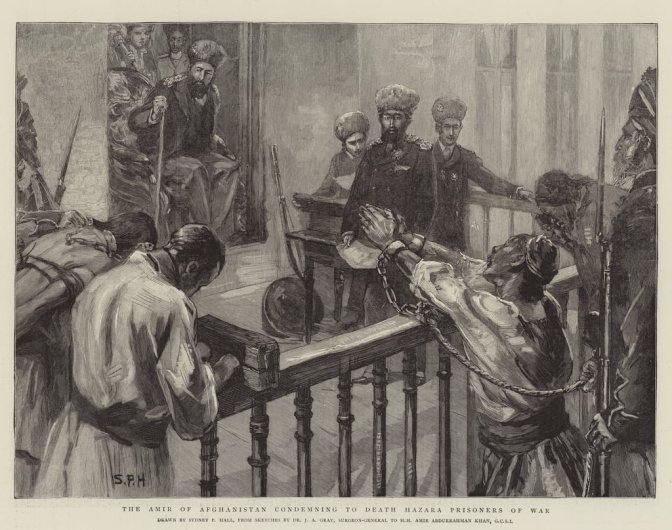
Geneva Genocide Convention and Punishment 1948: On December 9, 1948, the United Nations declared genocide a serious international crime and vowed to take disciplinary action against the perpetrators. In the Convention, genocide means any of the following acts committed with the intent to destroy, in whole or in part, a nation, ethnical, racial or religious group, as such:
a. Killing members of the group
b. Causing serious bodily or mental harm to members of the group
c. Deliberately inflicting on the group conditions of life calculated to bring about its physical destruction in whole or in part
d. Imposing measures intended to prevent births within the group
e. Forcibly transferring children of the group to another group
Hazaras are a multi-diverse and peace-loving nation, a century-long systematic persecution, discrimination, and being driven out from society have made them to strive seek knowledge and progression.
On the 25th of September, on the Hazara Genocide Memorial Day, Hazaras from across the globe call on human rights organizations, global civil society, the United Nations, and countries who are signatories to the Geneva Genocide Convention and Punishment 1948 to acknowledge and officially recognize the Hazara Genocide, the crimes committed against humanity to bring closure to thousands of Hazara families and to prevent further similar atrocities not only against Hazaras but other communities and humanity across the globe.
Don’t look the other way, do not hesitate to acknowledge the systematic Hazara Genocide, it is in your power and moral obligation to stop Hazara genocide and crimes committed against humanity.
[1] Mousavi Xiii
[2] Historical and Military Gazette of Afghanistan V-V.
[3] Historical and Military Gazette of Afghanistan V-V.
[4] Preliminary notes on Hazara Culture: Klaus Ferdinand.
[5] Aien Akbari.
[6] Belgian geographer Philip Vandermaelen, 1795-1869.
[7] Journal of the Asiatic Society of Bengal v.14, no.160 (n.s. 76) (1845) Published 1845.
[8] Bayazid Bayat, Tazkira-i-Humayun-o-Akbar, 1585-1739.
[9] Ariana Antiques Charles Mason 1800-1853).
[10] Journal of the Asiatic Society of Bengal v.14, no.160 (n.s. 76) (1845) Published 1845.
[11] (Hassan Poladi 1989:184)
[12] The rival powers in Central Asia; or, The struggle between England and Russia in East X
[13] (Seraj Altawarikh 1333, 1912 V3: 781-2, 809, 812).
[14] (Temirkhanov 1980:143)
[15] (Seraj Altawarikh 1333, 1912 V3: 780-781)
[16] Seraj Altawarikh V:IV.
[17] Civil & Military Gazette archives 1892
[18] Civil & Military Gazette archives 1894
[19] Argus of Melbourne Vic 1848-1956. Wheeler The Ameer Abdur Pahman: 161.
[20] Civil & Military Gazette archives 1892.
[21] Temirkhanov 152, 174,-5 190
[22] Temirkhanov 152, 174,-5 190.
[23] Bellew The Races of Afghanistan: 115
[24] Taliban-Ahmad Rashid: Journalist
[25] Hazaragenocide.com
Related Articles
-
An open letter from World-wide Poets addressed to United Nations Secretary-General Ban Ki-moon, President of the European Commission José Manuel Barroso, and President of the United States, Barack Obama.
-
Poets discover Hazara while NATO fails to protect them from terrorists
-
An Open Letter from the Poets World-wide to the Hazara, Civil and Human Rights Organizations, Immigration Authorities, and World Leaders
-
Remembering Hazara Genocide Committed by War Criminals Ahmad Shah Massoud, Abdul Rab Rasul Sayyaf and their Allies
-
300 Hazaras killed and injured: international media ignore genocide and ethnic cleaning!
-
World Poetry Day: 324 Poets from 93 Countries Unite to Stop Genocide of Hazara
-
Ongoing Hazara Genocide: Pashtun Taliban Terrorists killed over 52 in Sar-e Pol
-
Asylum Seekers Call for Justice – Australian Hazaras Protest Against Genocide in Pakistan and Afghanistan , May 10th Parliament House Canberra, United Nations and Pakistan Embassy.
-
World Wide Protest Against Genocide in Pakistan and Afghanistan
-
Mazar i Sharif Genocide Memorial
-
Stop Hazara Genocide
-
Kabul: Protest of Hazara Women Against Hazara Genocide
-
Hazara Genocide Continues, Pashtun Terrorists Cover their Crimes Under the Name of Daesh
-
Hazara Genocide by Pashtun Taliban and IS, Mass Graves found in Mirza Olang
-
The Hazara Protest Against Genocide in So-Called Country Afghanistan
-
AUSTRALIAN HAZARAS CRY FOR HELP TO END THE GENOCIDE IN MAKING OF THE HAZARAS IN PAKISTAN
-
Protest against the genocide of Hazaras in Pakistan & Afghanistan- Vienna 28 April 2012
-
Gothenburg-Sweden: Conference: Hazara genocide in Pakistan; challenges and solutions
-
British Parliament: Conference on Genocides of Hazaras in Pakistan
-
London International Conference on Genocide of the Hazara People
-
Genocide of Hazaras in Pakistan- Google map
-
Uncovering Parallels: The Hazara Genocide and the Jewish Holocaust
-
From Awareness to Action: Addressing the Roots of the Hazara Genocide

Poems for the Hazara
The Anthology of 125 Internationally Recognized Poets From 68 Countries Dedicated to the Hazara
Order Now
Human Rights, Native People, Stateless Nations, Literature, Book Review, History, Philosophy, Paradigm, and Well-being
Subscribe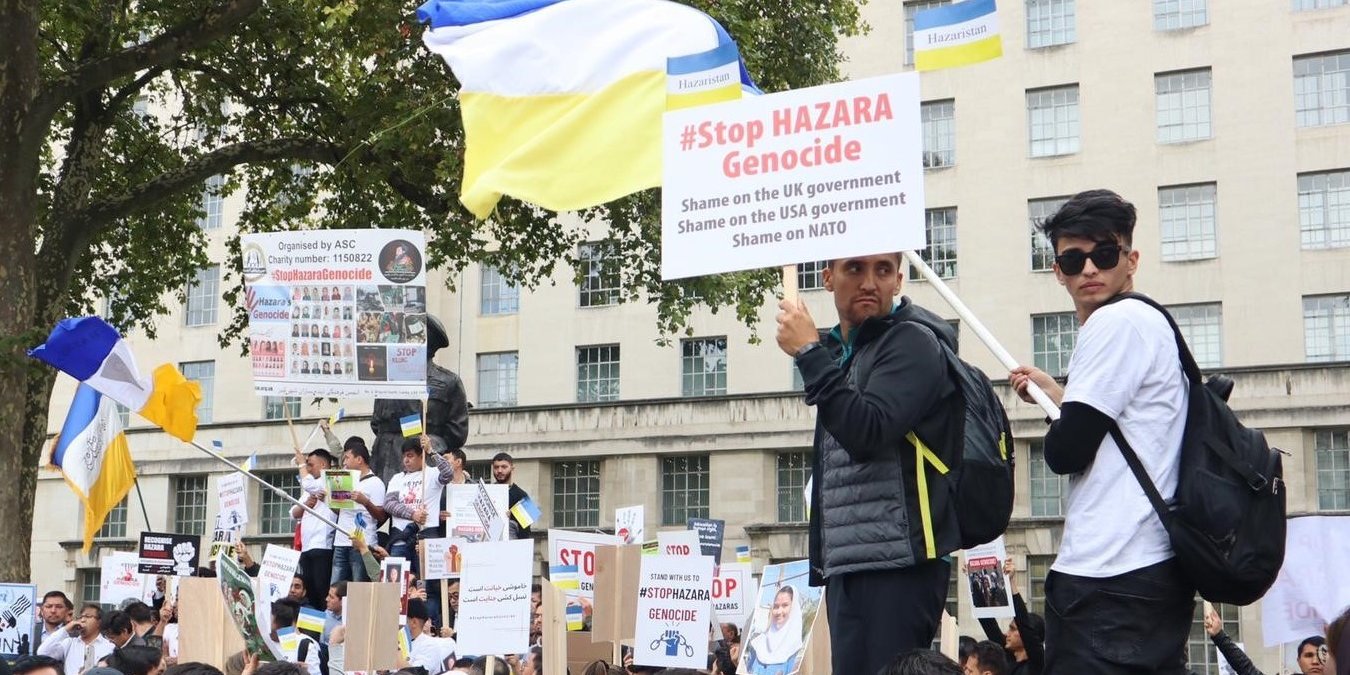
From Awareness to Action: Addressing the Roots of the Hazara Genocide
Saturday 2 March 2024 ,
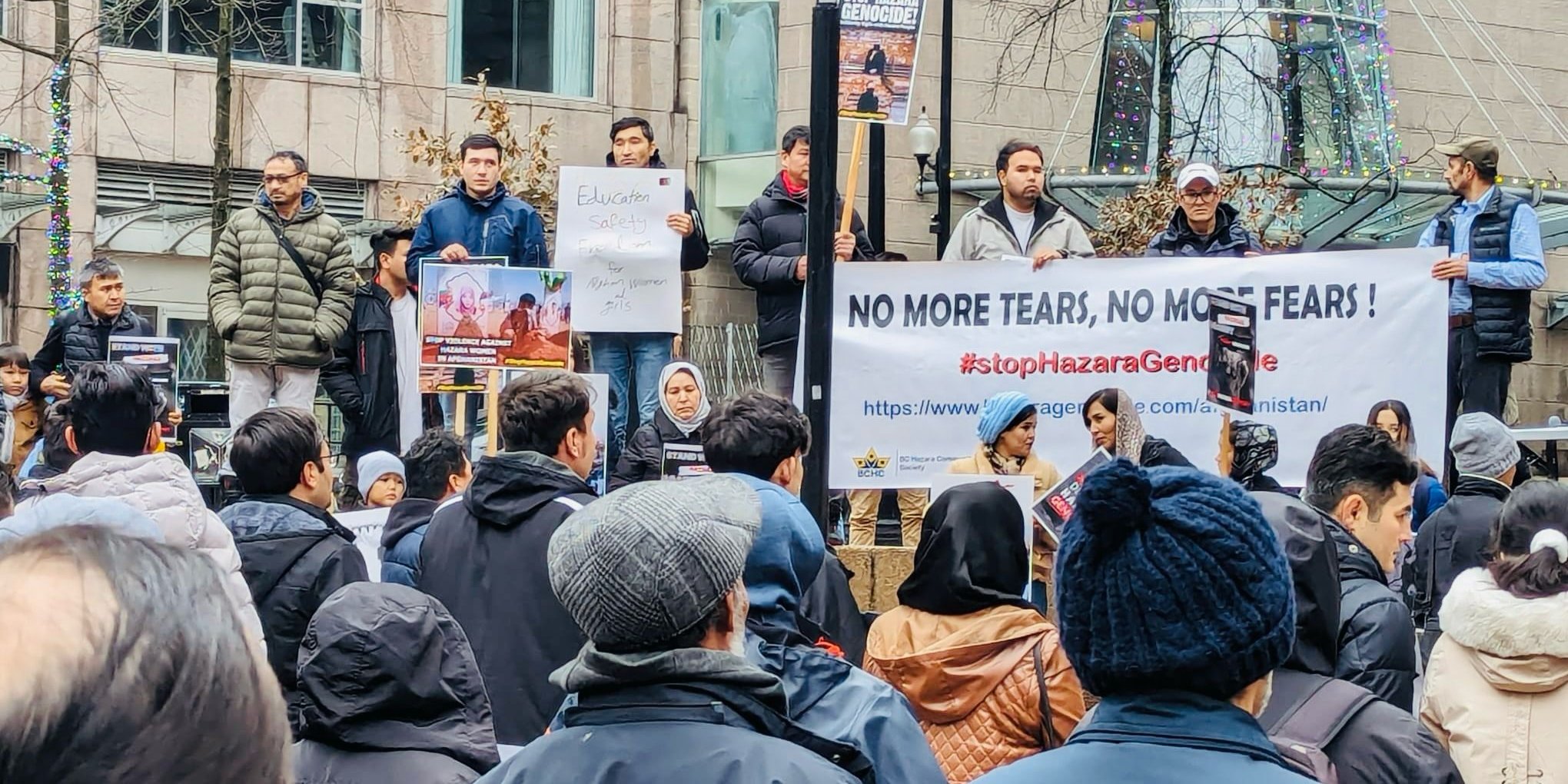
Taliban’s Systematic Abduction of Non-Pashtun Girls: Urgent Calls for International Action
Thursday 25 January 2024 ,
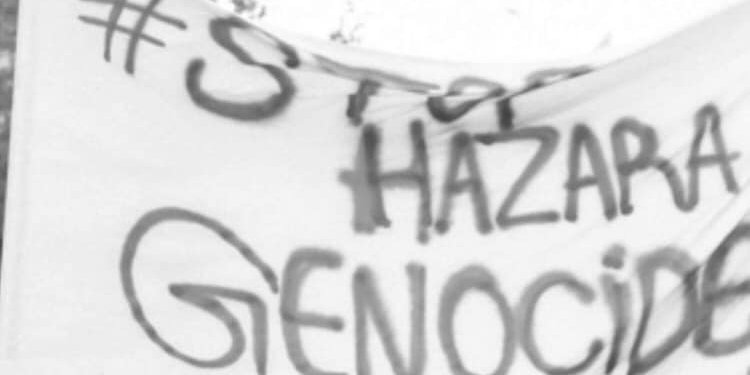
Hazara Genocide Continues: Brutal Attack on Hazara Community in Pol-e-Khomri, Baghlan
Saturday 14 October 2023 ,
Latest
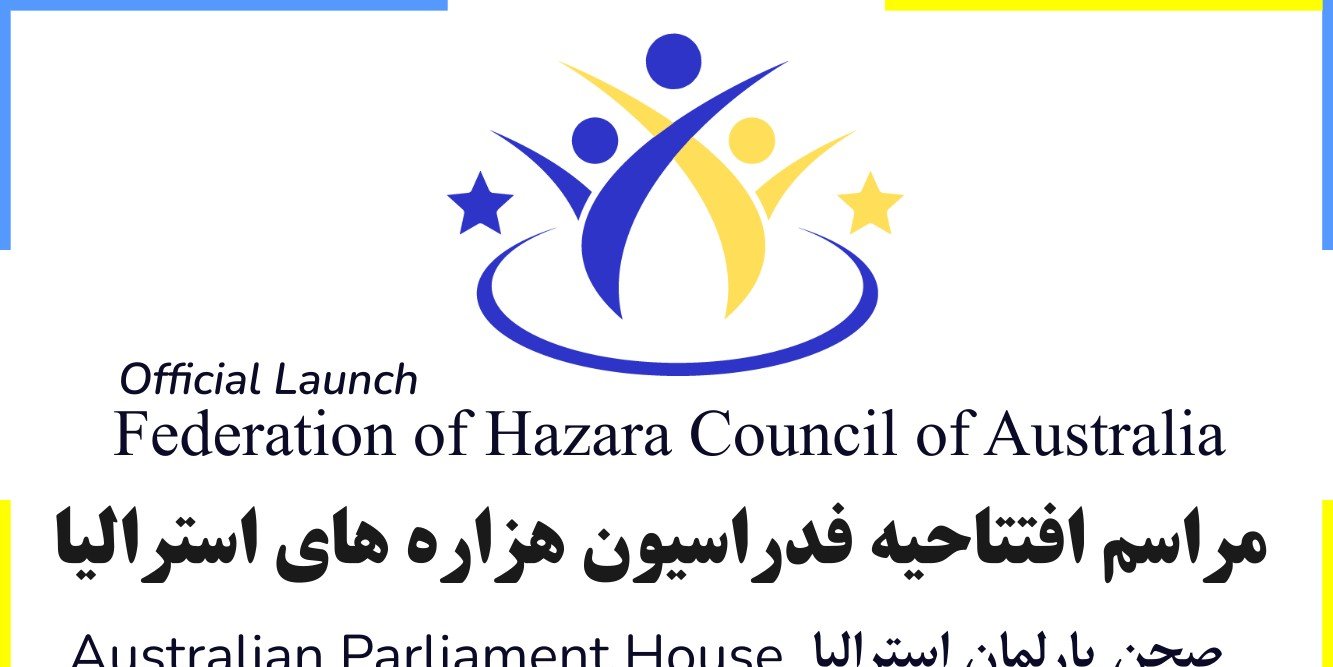
The Federation of Hazara Council of Australia (FHCA) is to launch at Parliament House
Thursday 22 February 2024 ,

Hazara Stateless Nation Embarks on Digital Sovereignty Journey with Launch of Digital Hazaristan
Thursday 22 February 2024 ,
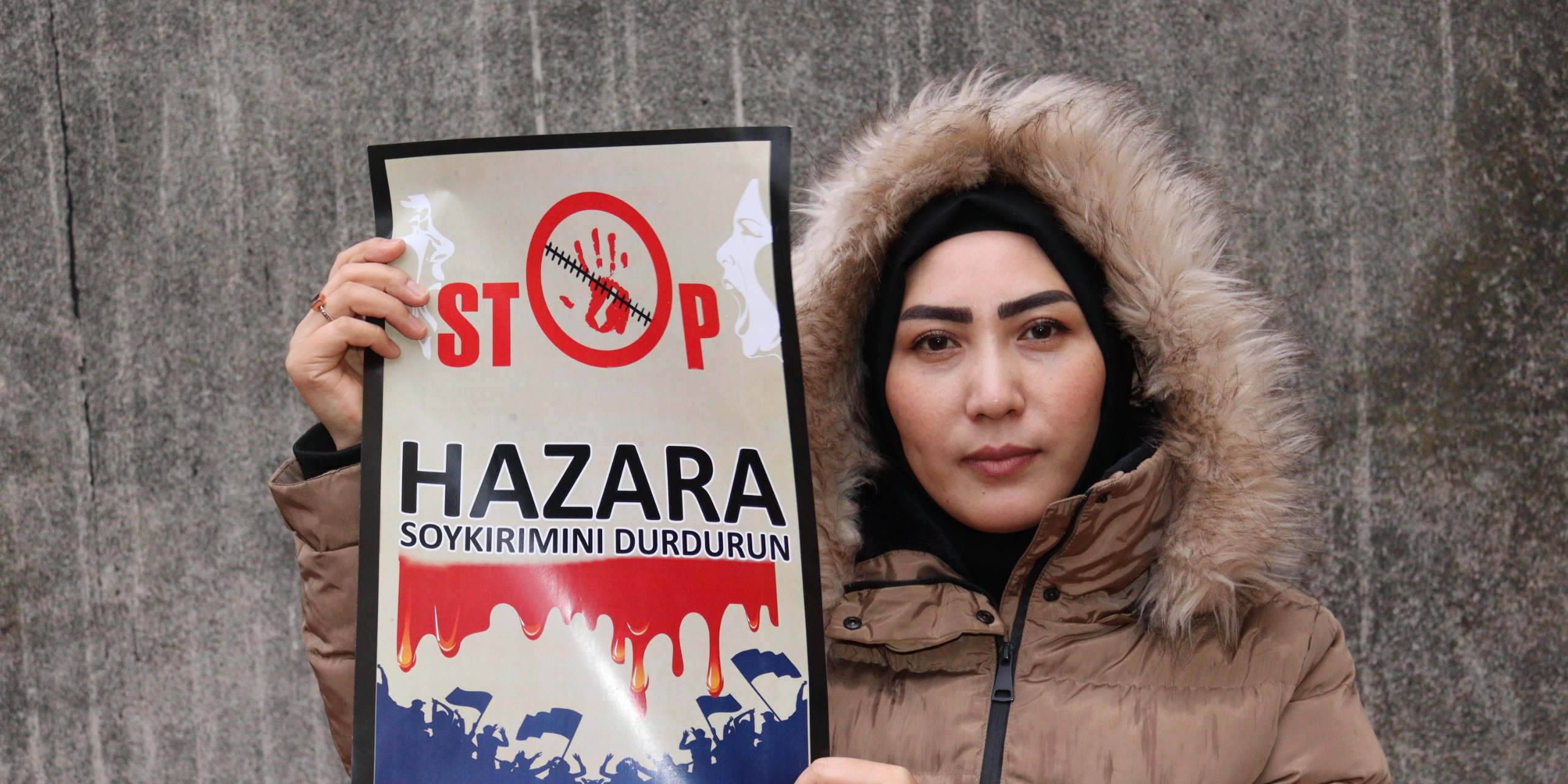
Trabzon Rally Denounces Hazara Genocide and Taliban Abductions: Global Appeal for Action
Thursday 25 January 2024 ,
Protest
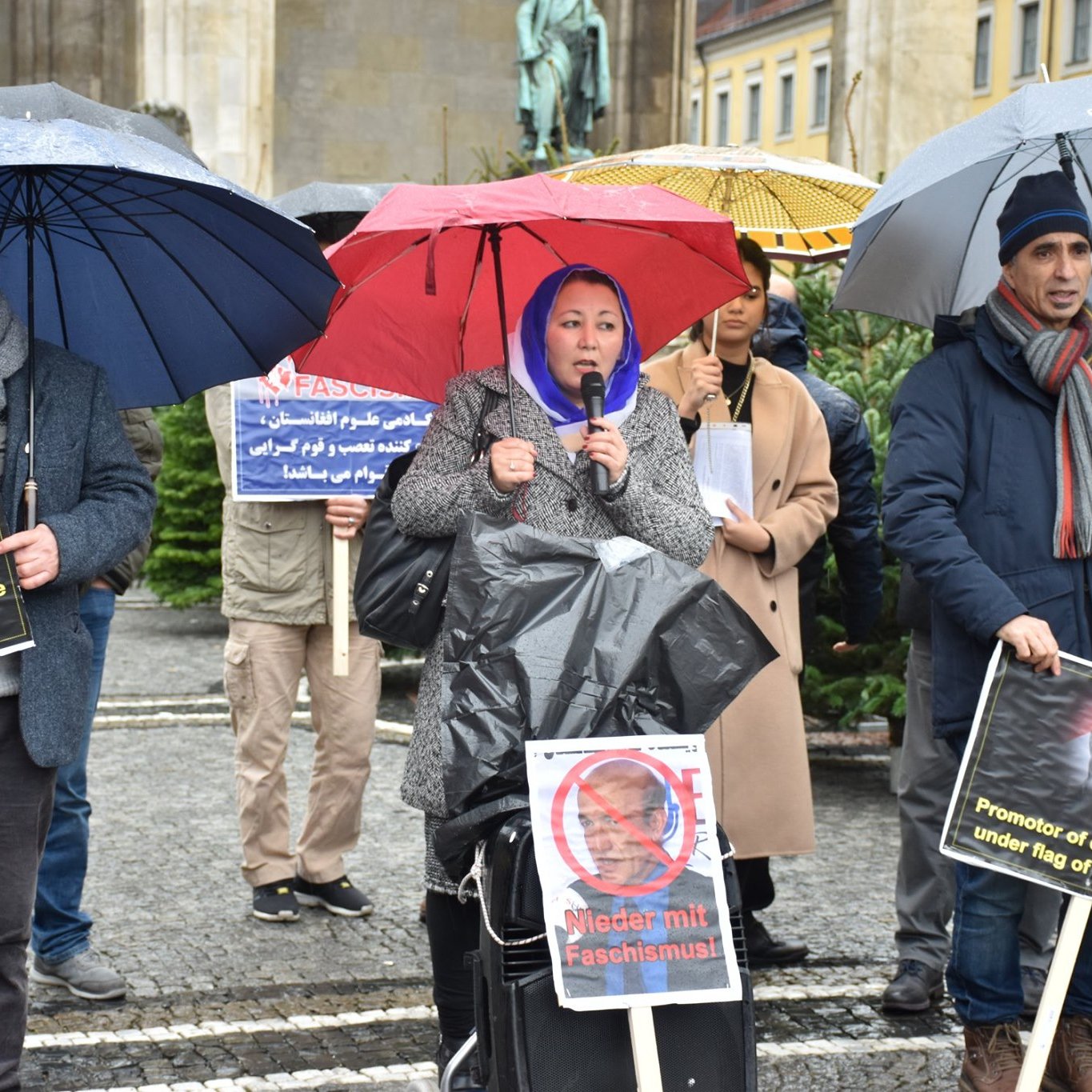
Munich: Protest Against Afghan Nazism and Fascism
Sunday 22 December 2019 ,
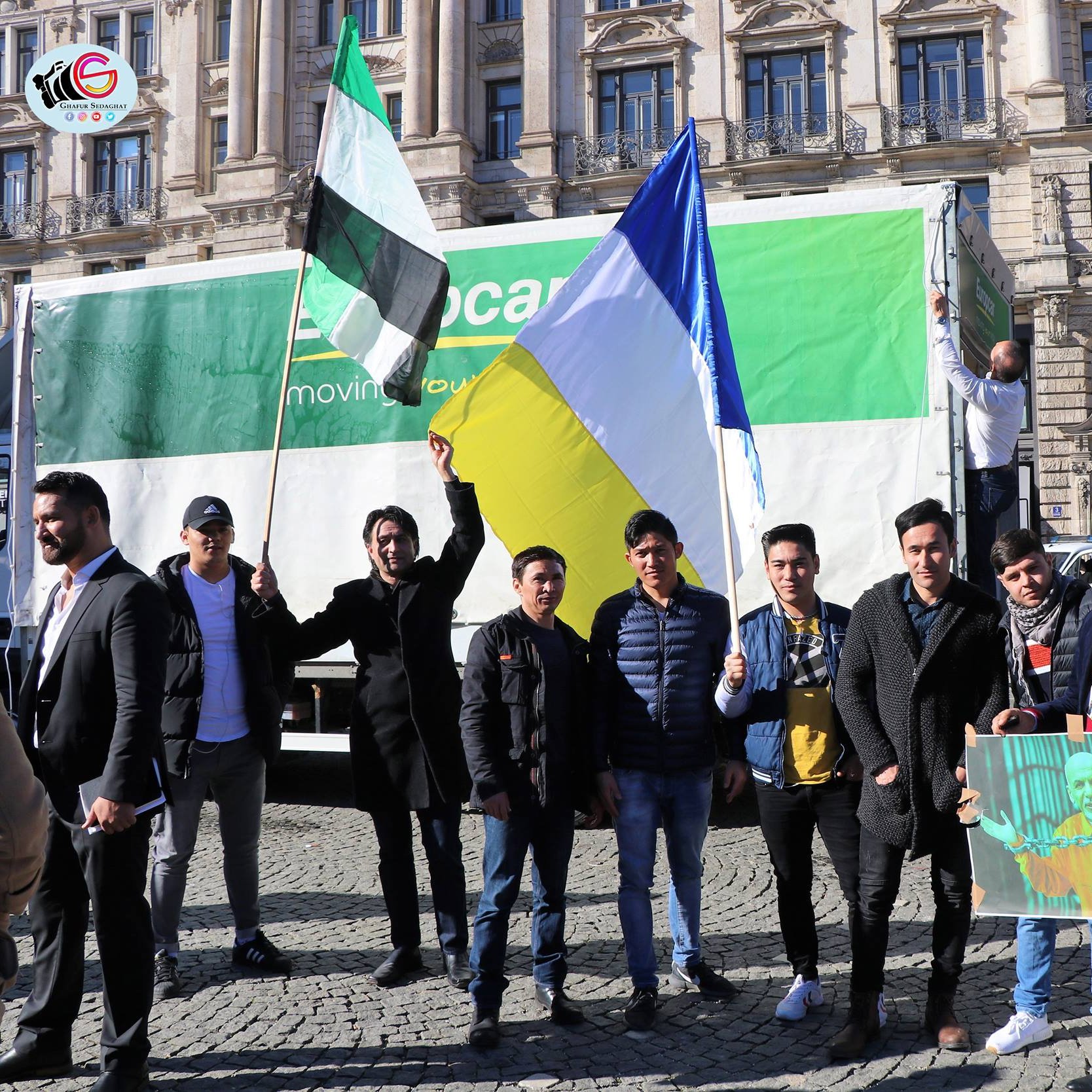
Munich Security Conference: Protest Against Talibanization, Pathanization, One-ethnic State, Ethnic Cleansing and Systematic Discrimination
Monday 18 February 2019 ,
